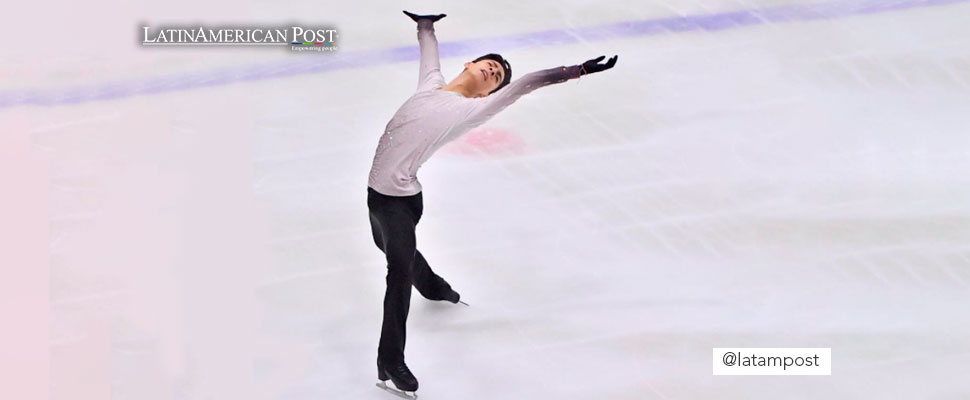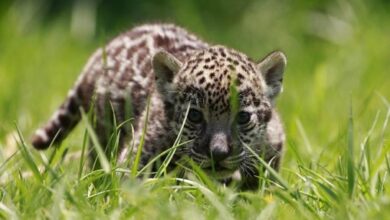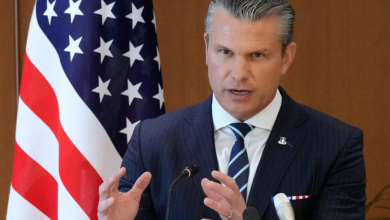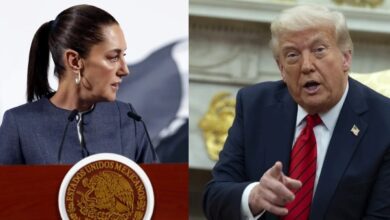Donovan Carrillo, Mexican Figure Skating Returns to the Winter Olympics
His qualification for the Winter Olympics is a great achievement for the Latin American country
His qualification for the Winter Olympics is a great achievement for the Latin American country

Photo: IG-donovandcarr
LatinAmerican Post | Luis Angel Hernández Liborio
In April 2021 Donovan Carrillo participated in the World Figure Skating Championships held in Stockholm, Sweden. The young Mexican, who was then 21 years old, managed to classify among the best 20 of the competition, which gave him the pass for the Beijing 2022 Winter Olympics. This marked a milestone in Mexican skating, as Carrillo became the second Mexican to classify in this discipline with a career that continues to rise.
Perseverance, his greatest virtue
Donovan Carrillo was born and raised in Mexico, something relevant for a country that has had representatives in winter sports who have developed their careers outside of it. Born in Jalisco, in western Mexico, the young promise of Mexican figure skating has had a meteoric rise that at this point in his career has taken him to the Olympic Games. Like the “summer” athletes, Carrillo has had to face the economic and political difficulties of his country that impede the development of the sport.
However, Carrillo has declared that his inspiration has been Javier Fernández, a Spanish skater who won bronze at the last Olympic Games held in Pyeongchang in 2018. The Spaniard won a medal for his country despite the fact that, like Mexico, his conditions climatic conditions, and his winter sports tradition did not favor him. The Mexican aspires to achieve something similar, which is why he has not given up despite the adversities he has encountered to practice his discipline.
Olympic Channel has followed his story through Winter Tracks, small capsules where we see his way to the Olympic competition. Carrillo trains in an ice rink in a shopping center, far from the level and minimum infrastructure conditions that an athlete requires. The type of rink, the ice, and its size are not suitable for an Olympic athlete, even more so considering that the rink is full of people while training. The young man has had to leave his native Jalisco to move to León, Guanajuato because the track where he trained closed due to the health crisis. Unlike other Mexican athletes with greater resources, Carrillo has not been able to move to another country to train with the ideal conditions for his sport.
For this reason, his greatest virtue has been persevering to reach the goal of fulfilling his Olympic dream and seeing the flag of his country fly at the top. His participation in Beijing begins on February 7 with the short program, for which he has chosen “Black Magic Woman” by Carlos Santana. For this program, she has prepared a gala dress that has not gone unnoticed with its 18,000 pieces of glass and studs. Later, on February 9, he will perform his free program with “Perhaps, perhaps, perhaps” in the version by Carlos Rivera and Daniel Boaventura.
Also read: Sportswashing, Sport as a Public Image Strategy
How do you compete in winter sports in a “hot country”?
Mexico, despite its geographic and demographic dimensions, has not been able to establish itself as a relevant competitor in world sport as countries like Cuba or Brazil have. Mexican Olympic sport has depended on athletes with a successful career that, once it ends, also makes the country disappear from these disciplines. Mexico has medaled in cycling, weightlifting, and pentathlon, to mention a few in which it has stood out in this way. Public policies towards sports are subject to changes in administration and do not respond to a long-term policy, for example, in Mexico the press described participation in Tokyo 2020 as a failure.
If “summer” sports suffer from the disarticulation of resources, infrastructure, and public policies, winter sports practically do not exist. One of the reasons that could be argued is the geography of Mexico, a mostly “warm” country. Despite the existence of mountains and “cold” regions, the practice of winter sports is scarce and soccer continues to be the most attractive sport for Mexicans. So the alternatives for athletes who are interested in winter disciplines are few. They can, like Carrillo, train in infrastructure that is not suitable for their sport or does it outside the country. The Mexican delegation to Beijing consists of four athletes: Donovan Carrillo in figure skating, Sarah Schleper and Rodolfo Dickson in alpine skiing, and Jonathan Soto in cross country.
With the exception of Carrillo, all of them have been trained at a sports level outside of Mexico, Sara Schleper is of American origin and competed before for the United States. In the same country, Jonathan Soto began training during his stay as an engineering student, while Rodolfo Dickson was born in Mexico but was adopted by Canadians, so his life and sports training took place in Canada. This has generated controversy in Mexico since the athletes’ sense of belonging and identity with the country is questioned. For example, in the past games in Tokyo, the women’s softball team was criticized for throwing away their uniforms after elimination, most of the players were of American origin and with sports training in the American Union.





